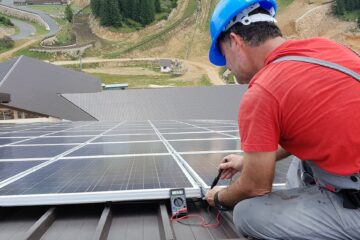EnergyForTheTaking.com is reader-supported. When you buy through links on our site, we may earn an affiliate commission.
Welcome to the world of RV solar power! Solar energy has various advantages, one of which is that it may help you save money in the long term. When studying this topic, I was amazed to see how much information about a complete RV solar system with batteries is available on the internet. Unfortunately, there is a lot of misunderstanding regarding solar energy. Which is the best? How do they function? Are there RV solar panel kits? What will it cost me? The answer is that there are many distinct solar systems, each with advantages. You should select the one that best meets your requirements and budget. This article will teach you all you need to know about going solar with your RV. This includes what it is, how it works, why you should go solar, and which systems are ideal for your requirements.

7 Major Components of an RV Solar System
The following are the key components of an RV solar system:
- Solar panels: These turn sunshine into electricity, which is then used to power the RV’s electrical systems.
- Charge controller: This device regulates the amount of energy stored in the batteries and avoids overcharging and undercharging.
- Batteries: These power the RV’s electrical systems by storing the energy provided by the solar panels.
- Inverter: A device that converts direct current (DC) power generated by solar panels and batteries into alternating current (AC) electricity, utilized by most household appliances and electrical equipment.
- Wiring and connectors: Connect all of the solar system’s components so that power can flow from the solar panels to the batteries and inverter.
- Mounting hardware: Secures the solar panels to the RV’s roof.
- Monitor and control system: Provide a mechanism to monitor the system’s performance, including the battery state, the quantity of energy produced by the solar panels, and the amount of energy consumed by the RV’s electrical systems.
These components work together to capture the sun’s energy, store it, and make it available for RV appliances and equipment. In addition, some systems may incorporate other components, such as backup power generators.
The Physical Layout of an RV’s Components
To optimize the amount of sunshine received, the solar panels are positioned on the RV’s roof. The size and number of panels needed will be determined by the RV’s unique requirements, such as the size of the battery bank and the power requirements of the RV’s electrical systems. The solar panels are linked to wires that extend from the roof to the RV’s interior.
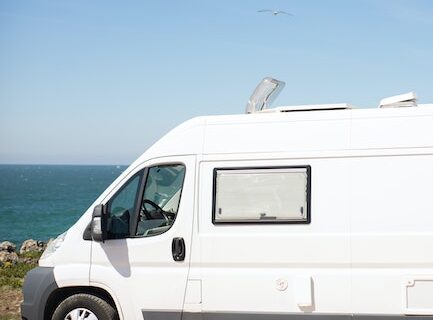
The charge controller is typically found within the RV, near the battery bank. The solar panels’ wires are linked to the charge controller, which controls the power flow from the panels to the batteries.
The batteries usually are housed within the RV in a specialized battery compartment. Beneath a sofa, inside a stair, under a bed, or in a closet are common hiding locations. The charge controller is linked to the batteries, which are used to store the energy generated by the solar panels.
The inverter is also frequently found within the RV, near the battery bank. The batteries are linked to an inverter, which transforms the direct current (DC) power generated by the solar panels and batteries into alternating current (AC) electricity, which is utilized by most household appliances and electrical gadgets.
The wire and connectors travel from the solar panels to the charge controller, batteries, and inverter, connecting all of the solar system’s components and allowing power to flow throughout the system.
The monitor and control system is often positioned within the RV in a user-friendly area near the entry or control panel. It allows you to monitor the system’s performance, including the state of the batteries, the quantity of electricity produced by the solar panels, and the amount of energy consumed by the RV’s electrical components.
It’s crucial to remember that the configuration of an RV solar system might vary based on the RV and the user’s demands. Consult experts and select a design that works best for your RV and desired arrangement.
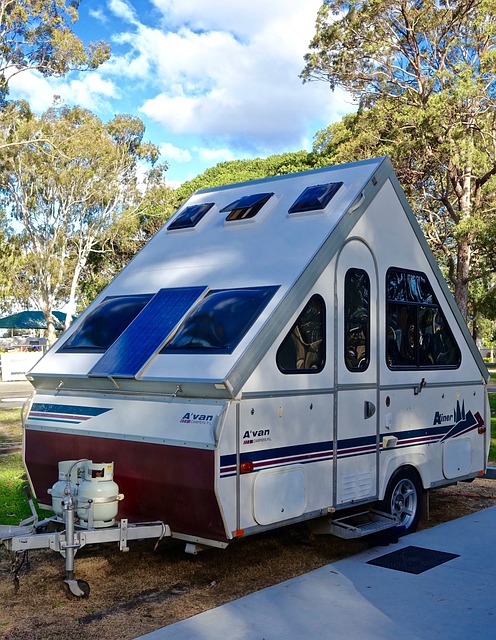
The Two Most Common Solar Panel Types
Polycrystalline and monocrystalline solar panels are the two most prevalent in RV systems. Polycrystalline panels are made of several silicon crystals fused together to generate solar cells. They are less costly to manufacture than monocrystalline panels because they convert sunlight into energy more efficiently in high-temperature conditions. However, they have a lower overall efficiency than monocrystalline solar panels and may not be as visually pleasing. On the other hand, monocrystalline solar panels are constructed from single crystals of silicon sliced into wafers to make solar cells. As a result, they are more expensive to manufacture than polycrystalline panels. Still, they have greater overall efficiency and more consistent performance over time. They are also more appealing to the eye than polycrystalline solar panels.
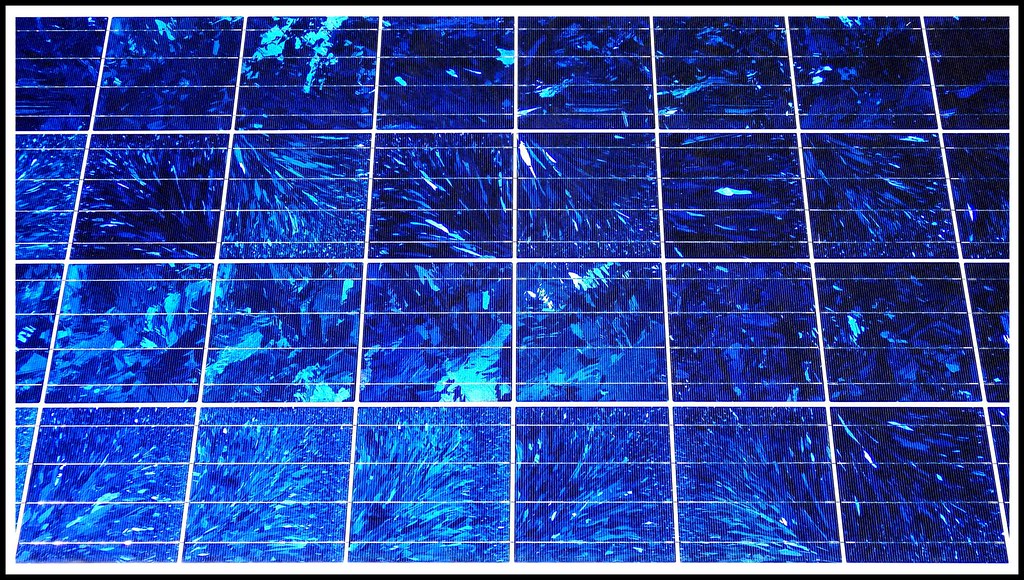
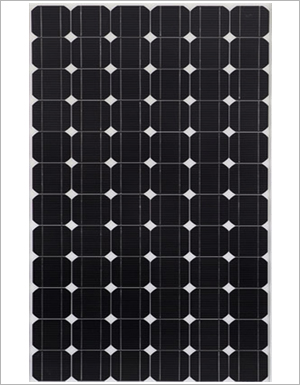
Both varieties have advantages and drawbacks based on the user’s demands and the context in which they are utilized. Therefore, before making a selection, it is best to talk with specialists and thoroughly assess your individual needs.
Your RV Solar System’s Batteries
Batteries are essential components of an RV solar system. They store the energy generated by solar panels during the day so that the energy may be used later at night or on overcast days when the panels do not produce as much electricity.
An RV solar system’s batteries are often connected to a charge controller, which regulates the amount of energy stored in the batteries. The charge controller prevents the batteries from being overcharged or undercharged, which can harm them and reduce their lifespan.
The batteries also power the RV’s electrical systems, which include lights, appliances, and other gadgets. This makes the RV self-sufficient and not dependent on external power sources, making it suitable for camping, boondocking, and other off-grid activities.
Types of Batteries
Lead-acid batteries and lithium-ion batteries are the two most common types of batteries used in solar systems.
Lead-acid batteries, which are very affordable and abundantly available, have been used in solar systems for decades. They are also long-lasting and sturdy, making them a popular choice for off-grid solar systems.
Lithium-ion batteries, on the other hand, have grown in popularity in recent years. They cost more than lead-acid batteries but have a far better energy density, meaning they can store more energy in a smaller space. They also outlast lead-acid batteries, need less maintenance, and are more efficient. As a result, they are quickly becoming the preferred solution for grid-connected solar systems and mobile applications like RVs and boats.
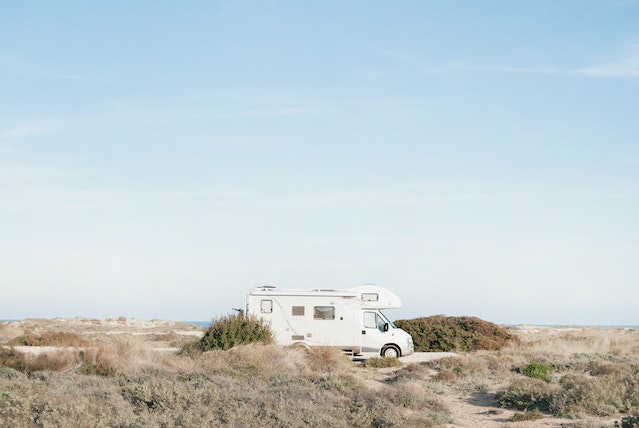
What is the Cost of a Complete RV Solar System with Batteries?
The cost of an RV solar system can vary significantly based on various criteria such as system size, component type and quality, and the individual demands of the RV and user.
A tiny basic system with a few solar panels, a charge controller, and a battery can cost between $1000 and $2000.
A more sophisticated and extensive system, with more solar panels, a more advanced charge controller and battery, and extra components such as an inverter and monitoring equipment, can cost $5,000 or more.
It’s crucial to note that the cost of RV solar systems can vary based on region and component availability, as well as the cost of installation, which can contribute to the overall cost. It’s also worth considering the long-term savings a solar system may give by lowering or eliminating the need for external power sources and the possible boost in RV resale value.
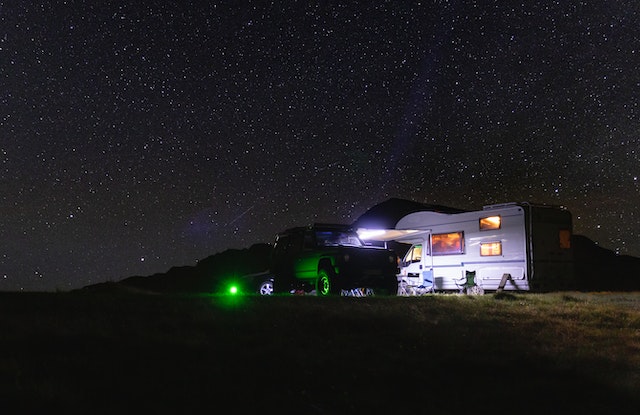
Calculating How Much Power You Need in a Complete RV Solar System with Batteries
A power audit of your RV is the best approach to determine how much electricity you need with a solar system. This may be accomplished by:
- Determining which electrical gadgets and appliances, such as lights, a refrigerator, a television, charging devices, and so on, will be powered by the solar system.
- Calculating the power usage of each item or appliance (in watts). Typically, this information may be found on the product’s label or in the user manual.
- Calculate the typical daily consumption of each device or appliance. For example, how many hours each day will the lights be on, how long will the refrigerator run, and so on.
- Calculate the daily power consumption (measured in watt-hours) of each device or appliance by multiplying the power consumption of each device or appliance by the average daily usage.
- Totaling the daily power usage of all gadgets and appliances to estimate the RV’s overall daily power consumption.
- Divide this figure by the number of days you anticipate staying off the grid to calculate the total energy required in watt-hours (Wh) or amp-hours (Ah). Based on the overall amount of energy required, you may calculate the solar panel array size, battery bank, and inverter required to power your RV.
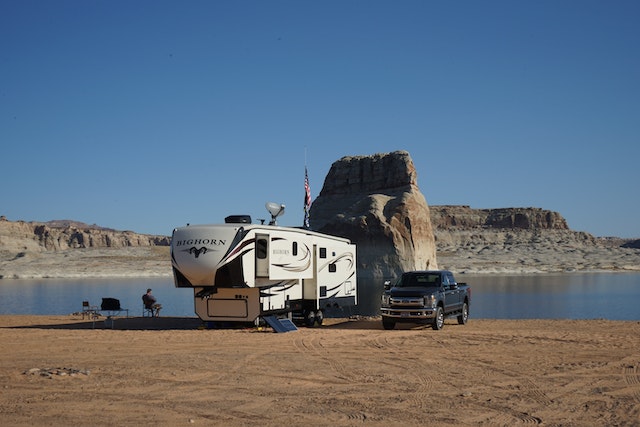
Following are some examples of what is needed for a full system in these pre-made RV solar panel kits. Click on images to get an idea of pricing. (Affiliate link)

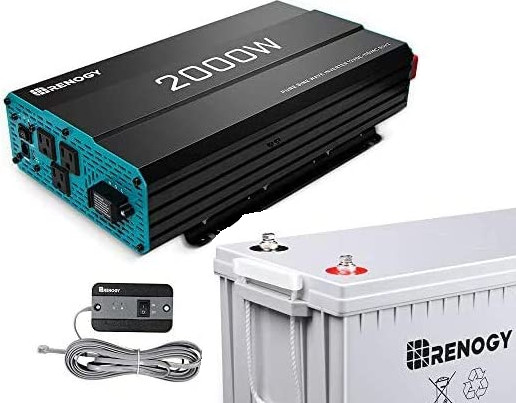
Final Thoughts
Installing a solar system in an RV may bring several advantages, including self-sufficiency, independence from external power sources, and long-term cost savings. However, careful planning and design are required to guarantee that the system fulfills the unique demands of the RV and the user. This includes completing a power audit to assess overall energy requirements, selecting appropriate components such as solar panels, batteries, and an inverter, and engaging with specialists to guarantee correct system installation and maintenance. A complete RV solar system with batteries may provide a stable and sustainable source of electricity for your trips with the proper planning and design.

***When you buy through a link on our site we may earn an affiliate commission. As an Amazon Associate, ENERGYFORTHETAKING earns from qualifying purchases.
